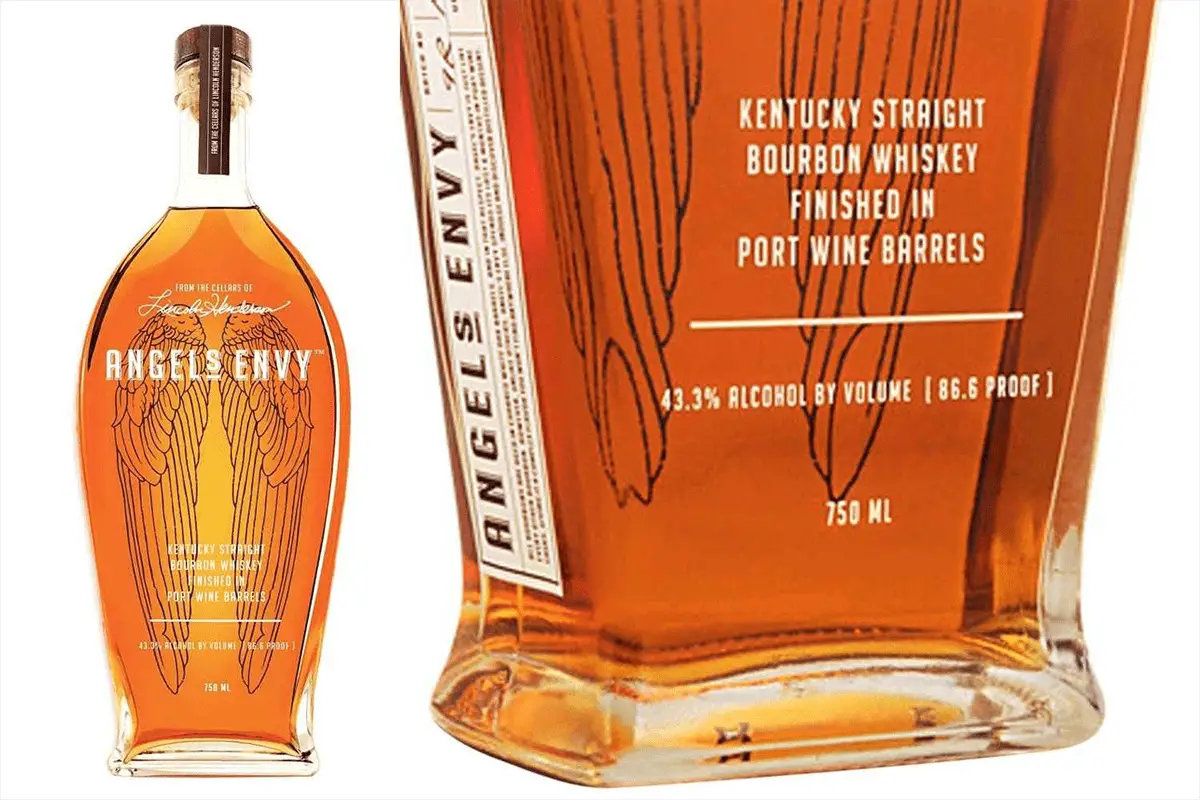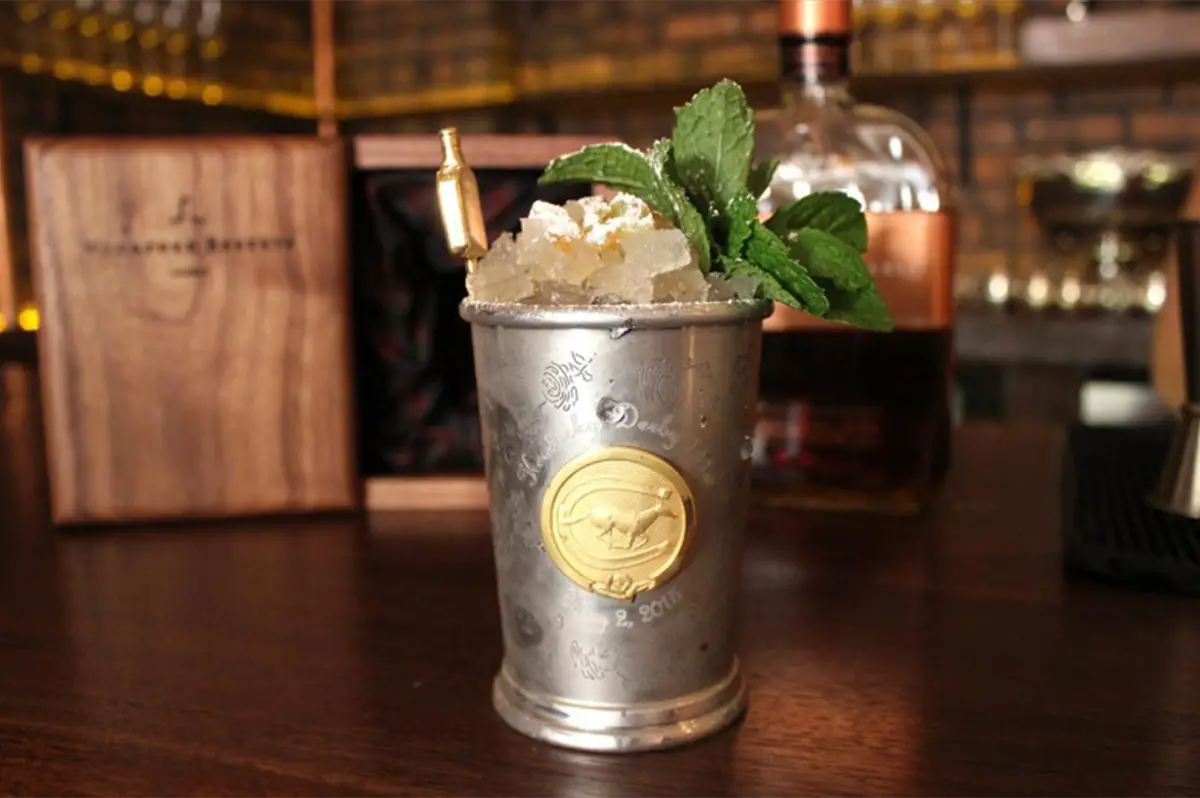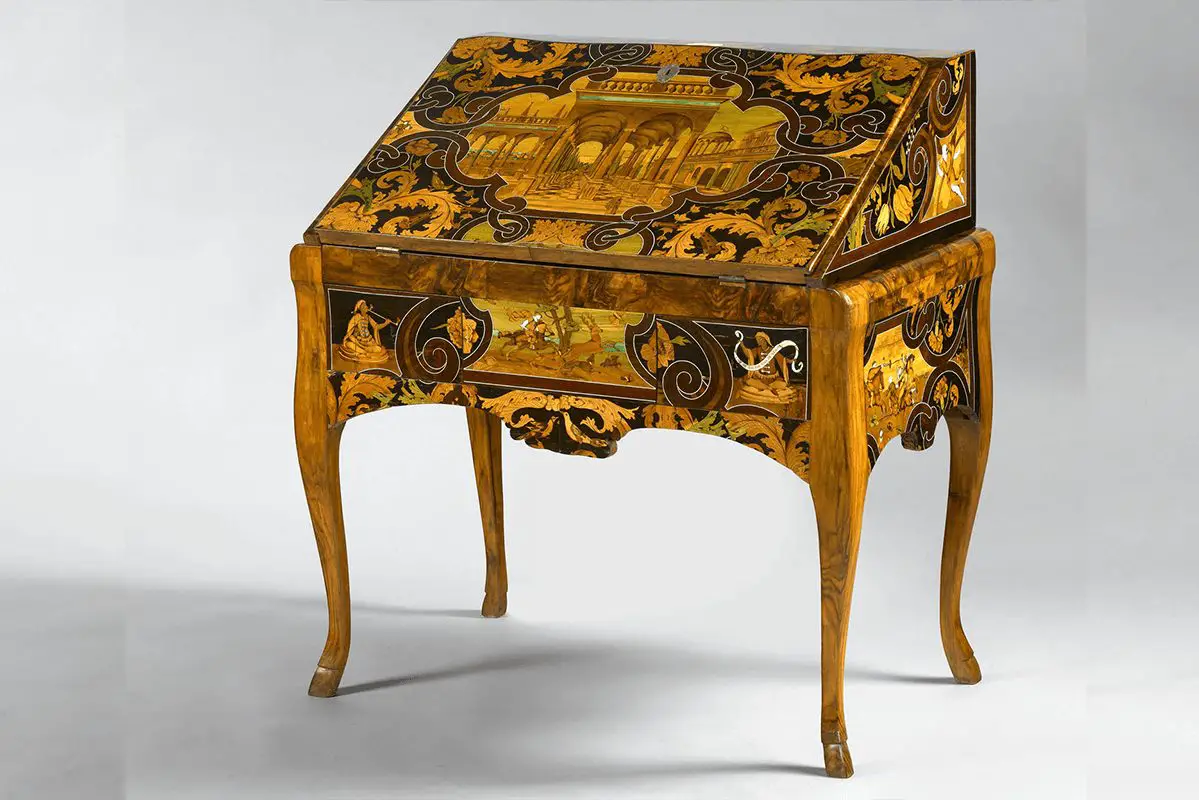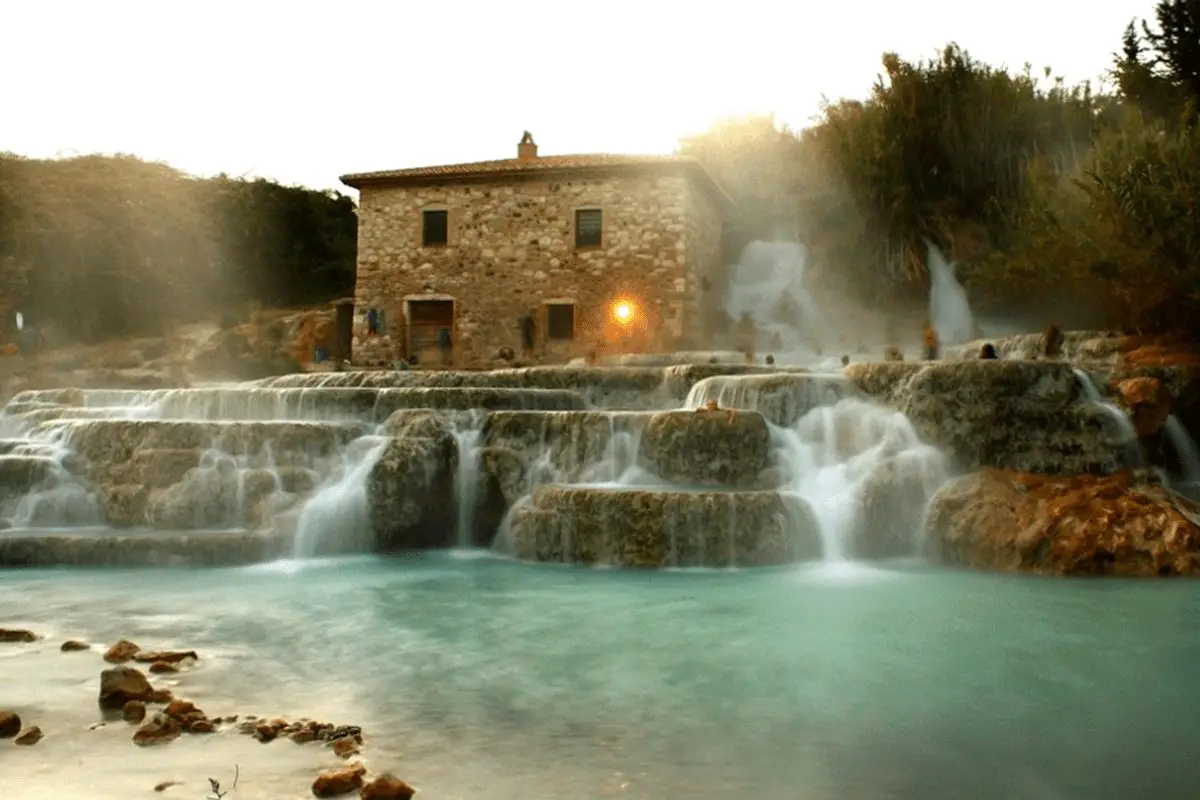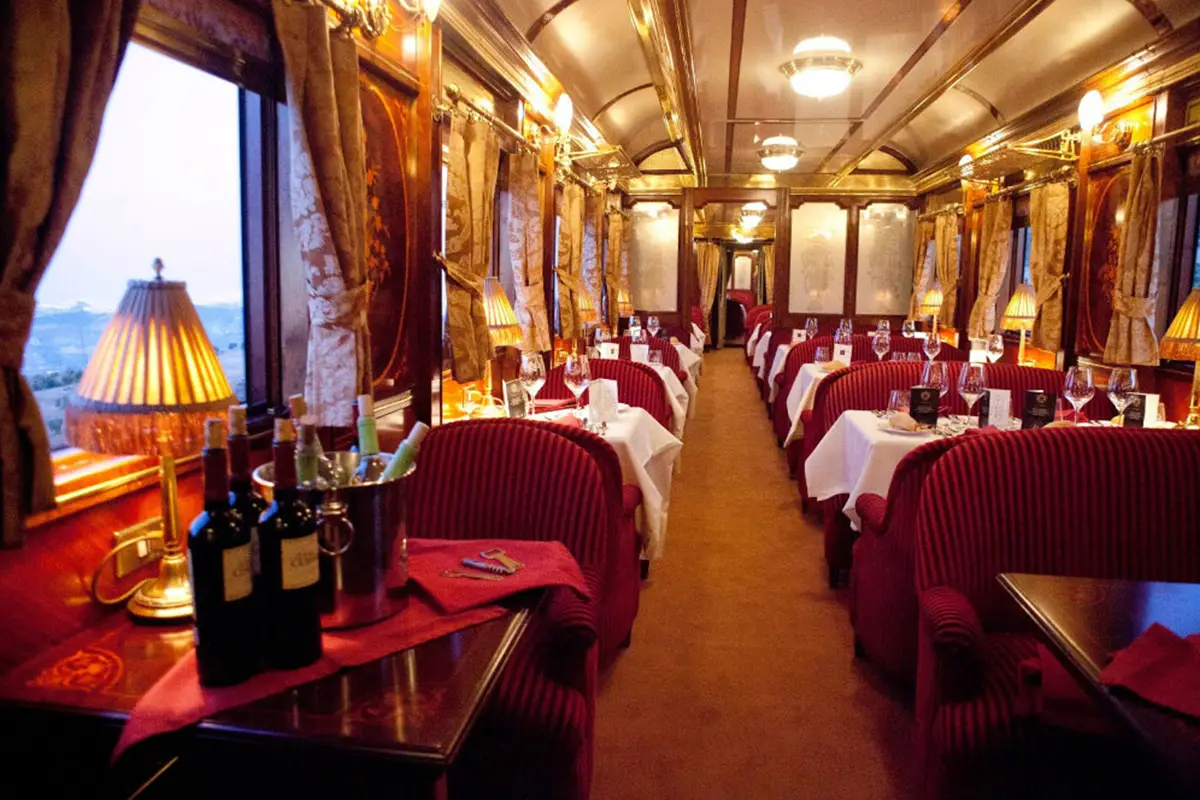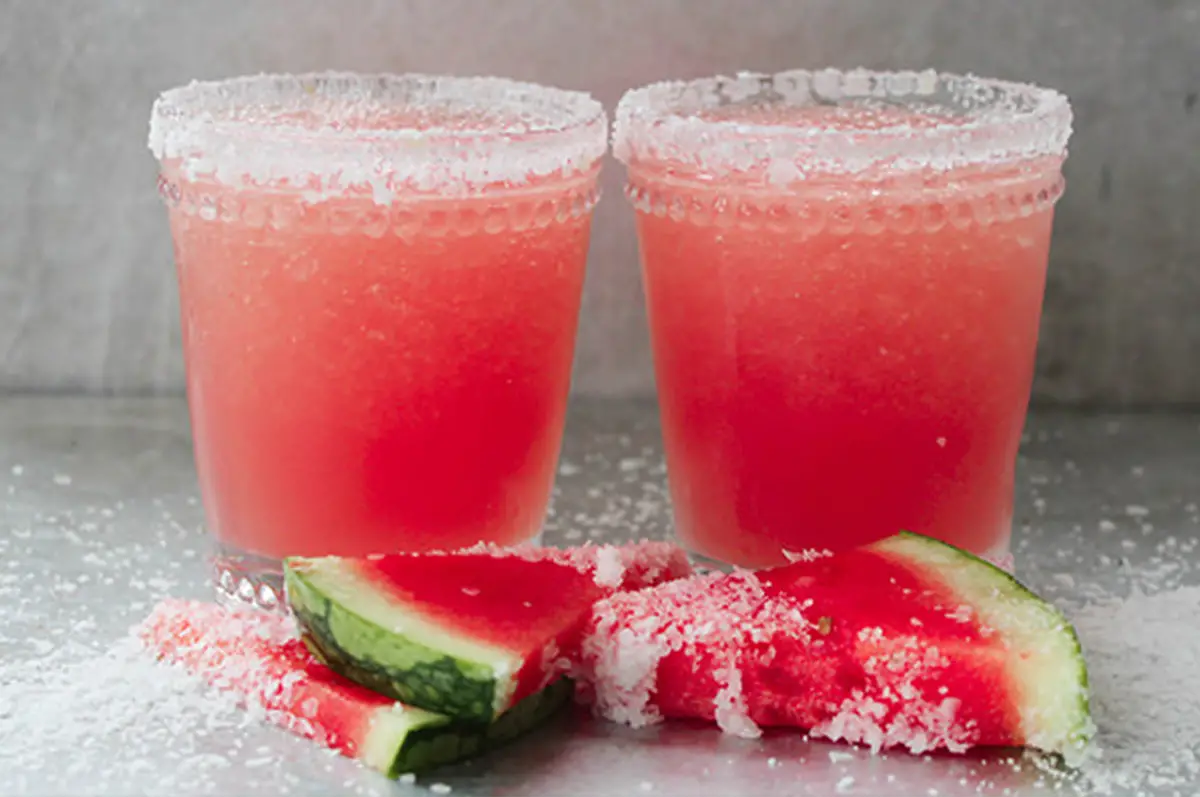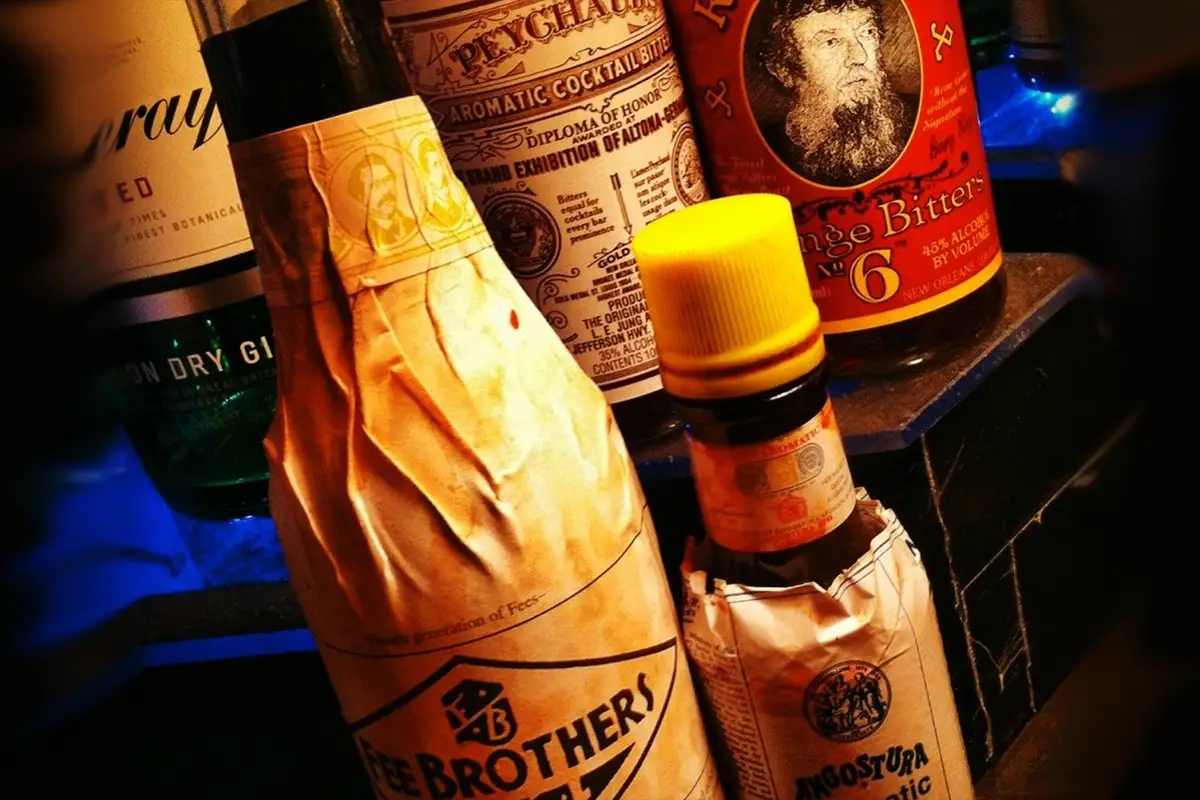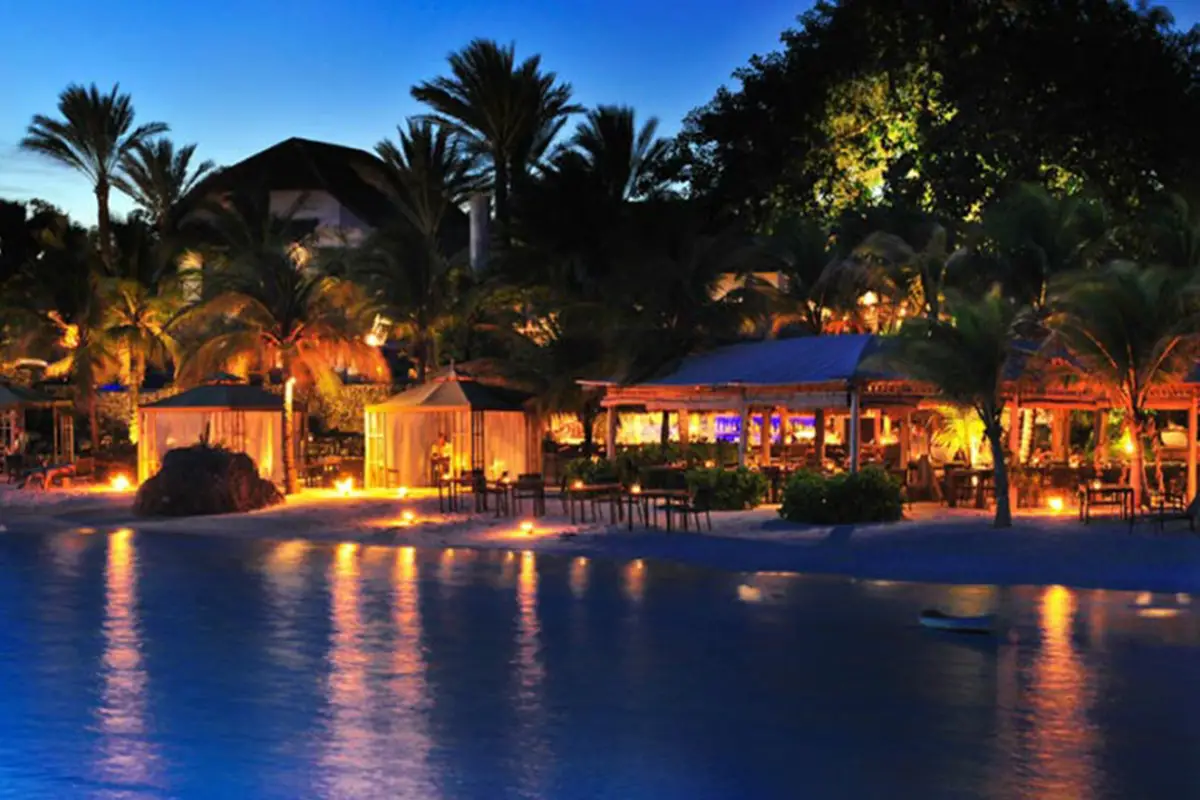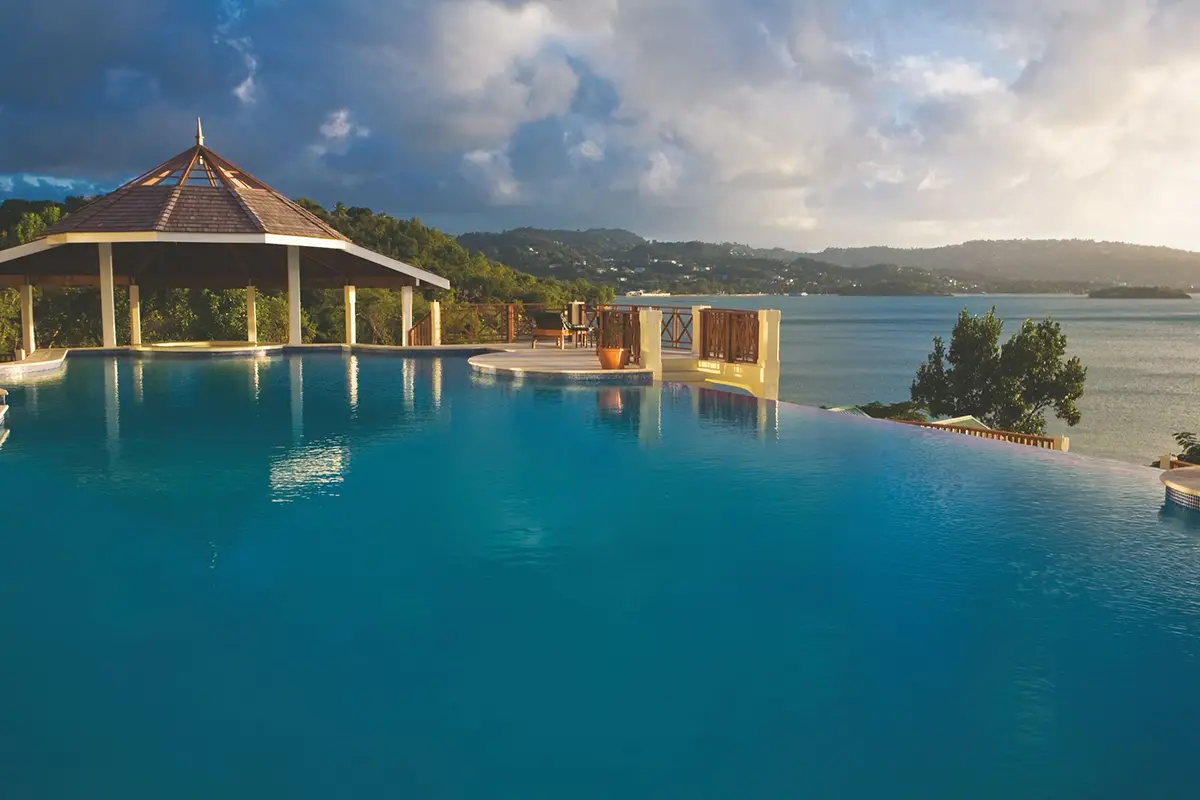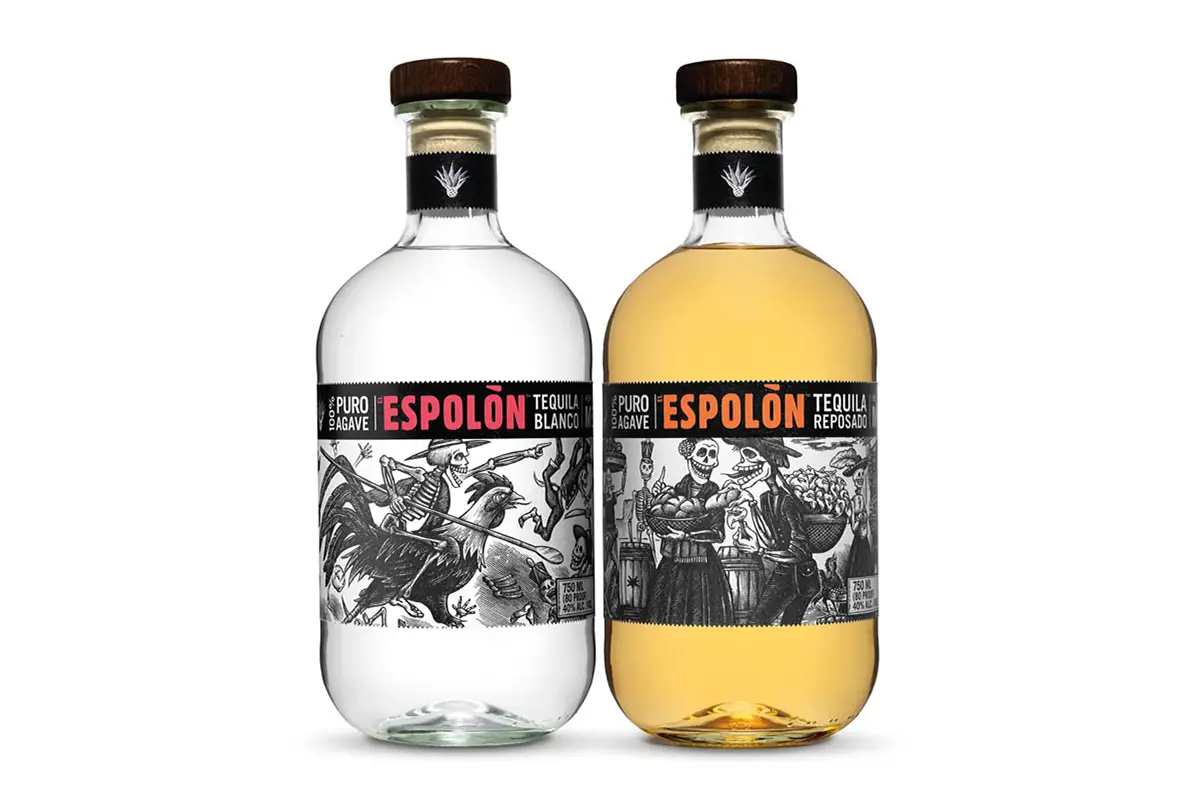What makes the modern man; what are the constituent parts? The equation, if you will. It can be a heavily loaded question and, of course, the ideal changes with the idealist, but there have to be a few fundamental basics. Matt Moore, singer-songwriter, entrepreneur and author of “Have Her Over for Dinner: A Gentleman’s Guide to Classic, Simple Meals“, and the Double R. Ranch take on the weighty matter of what it takes to be a modern, post-Millennial man. The answers may be something of a surprise Continue reading
 Angels, Devils and a Turkey
Angels, Devils and a Turkey
Belles and beaus are readying their bells and bows for the premier event of the South: the Kentucky Derby. And amid the horses and hoop skirts, that oh-so-Southern cocktail, the mint julep itself, is poised to make its annual gallop through the world consciousness. A genteel concoction of sugar, water, ice and mint; founded upon that most Southern of spirits, bourbon; the mint julep is to the South what the martini is to the North. (See Our Tips for Perfecting the Mint Julep and Drinking It in Style). Continue reading
 Greetings From Kentucky
Greetings From Kentucky
Looking to throw a derby party with mint juleps that people will actually remember? We have simple advice–go big or go home. Don’t buy any old whiskey, don’t cut corners on the ingredients and don’t serve Kentucky’s favorite cocktail in solo cups. These tweaks to your usual routine will have your guests looking forward to next year’s shindig.
 A Lover in Every Port
A Lover in Every Port

“A holiday like Valentine’s is all about things soft and luscious,” says Paul Mugnier, National Sales Manager for Graham’s, in what has got to be one of the best build-ups for a wine ever. “And that is what Six Grapes is all about. It’s the perfect embodiment of Valentine’s Day.”
The “Six Grapes” Mugnier praises is Graham’s Six Grapes Reserve Port, a type of wine instantly recognizable in that it is particularly sweet. Produced only in the Douro Valley in Portugal – where Graham’s, part of the legendary Symington’s family of port producers, is located – port is a “fortified wine.” Halfway through the fermentation process, a brandy is added, kicking up the alcohol content (Six Grapes is 20 percent ABV) to the point the yeast doing all the magic is killed off. The remaining sugar comes through in an unmistakable sweetness that makes port a favorite dessert wine, perfectly paired with cheeses and confections but most of all the Valentine’s stalwart that is chocolate.

“There’s nothing like a wonderful piece of dark chocolate, with all that slightly bitter quality, that tastes magnificent with the fruity, soft, velvety quality you get out of Six Grapes,” says Mugnier. Artisanal chocolates like Vosges, Scharffen Berger and Recchiutti are strong recommendations. Chocolate and Six Grapes complement each other exquisitely, combining fruitiness and earthiness, creamy textures and nutty undertones. A meeting of the ages, indeed.
With seductive aromas of plum and black cherry, Graham’s Six Grapes Reserve Port is imbued with silky tannins and a voluptuous mouthfeel that very nicely blur the line between “accidental flirtation” and “rolling around in the back seat of the car.” Enjoy the vintage at room temperature, in a full, open-mouthed glass (not the supposedly “traditional” pony glass) to enjoy not only the bouquet but also the black-red hue that, all by itself, blows even the most suggestive Valentine’s Day card right out of the water.
Take that, Hallmark.
 Best Hotel Gyms In The Top 5 Global Cities
Best Hotel Gyms In The Top 5 Global Cities
True fact: once you become “in shape,” it takes all of two weeks of inactivity to begin getting “out of shape.” Two weeks. That’s it. TWO. Continue reading
 Boutique Boomtown
Boutique Boomtown
The Westin? Love it. The Intercontinental? That’s a “10.” The Ritz-Carlton? There must always be a Ritz-Carlton.
And yet, if a critique is to be had, it is this: If you’ve been to one Westin/Intercontinental/Ritz-Carlton, you’ve been to them all. Which, if you’ve been to one, isn’t necessarily a bad thing, but it allows for only a very borderline exposure to the flavor and flair of the locale you are in.
 In With the Old—Why Antiques Can Be a Great Investment
In With the Old—Why Antiques Can Be a Great Investment
Looking for an alternative investment? Antiques can be some of the safest.
The erratic volatility in today’s markets could make any trader, however skilled, want to throw up his hands, cut his losses and toss his remaining money into a commode. A commode, of course, being a chest of drawers from France, circa 1750.
 Bath of the Titans
Bath of the Titans
It all started, as things usually do, when a god got persnickety. Continue reading
 King Of Trains
King Of Trains
James Bond had it shaken – not stirred – on it, Wilhelmina Murray owes her immortal soul to it, and Mr. Rachett got whacked in it. It’s the Orient Express, synonymous with romance and exoticism (and intrigue and mystery) and the unsung hero of “From Russia with Love,” “Dracula,” and “Murder on the Orient Express.” And yes, it still runs. Continue reading
 It’s National Watermelon Day!
It’s National Watermelon Day!
No lie. August 3rd really is “National Watermelon Day.” We at GLR can’t even begin to find the history for this one, but HolidayInsights.com speculates a summer holiday celebrating a summer fruit Continue reading
 Bitter Beauties
Bitter Beauties
No, not a room full of your exes – bitters are Weapon X of many a bartender, and the unsung hero of many a classic cocktail. “Think of bitters as the spice rack behind the bar,” says Joe Fee, co-owner of the four-generations-old bitters producer Fee Brothers.
 Peace in a Pod
Peace in a Pod
The pod people are coming. And they have their own hotels.
When he first introduced the property in the cutthroat hotel-scape of New York five years ago, Richard Born of BD Hotels went against convention — hard. While other debuting spaces one-upped each other with ever more rarified levels of luxury and exclusivity, the Pod 51, at 230 East 51 Street in Manhattan’s Midtown East section, shot for the modest-of-means hipster crowd. The rooms were small. The showers were communal. The starting price was $119 a night.
The success was immediate.
And, riding the wave of that success, this month witnesses the Pod becoming a chain. Using Pod power to reincarnate the old Allerton House at 145 East 39 Street as the new Pod 39, says Born: “This is a rare instance where a hotel genre has developed organically. When we opened the first Pod, we found it attracted a very particular kind of person: Individuals who thrive on travel and are looking for a hotel that enhances their exploration of a place. For them, the communal experience in the hotel’s public space is vital, being plugged-in is essential, and terrific style at an affordable price is expected.”
Translated, Pod people reveled themselves to be all about form and function, but frills? Not so much. And at either property, stepping into your room, whether it be the Single Pod, Double Pod, Queen Pod, Bunk Pod — it’s just what you think it is — or one of the Odd Pods (a townhouse studio-type space or a room with two double beds, depending on which hotel), is to step into an environment as efficient as your college dorm room but without the cut-rate color scheme and unflattering fluorescent lighting.
To some, to have the moniker “pod” brings to mind those vaguely unsettling honeycomb hotels in Japan, but with the Pod 39, Born and his team created an environment as welcoming as it is efficient. Of the 366 rooms, there are 57 singles, 83 bunks, 88 doubles, 137 queen-sized, and one double bunk, and the starting price remains a ridiculously-cheap-for-New-York $119 a night. Into each room designer Vanessa Guildford integrated bedside media hubs with a full range of ports allowing guests to connect to the room, view personal photos, videos and entertainment on wall-mounted flat-screen TVs. WiFi is free. But while the tech is 2012, the design, like that of the Pod 51, is decidedly a pared-down mid-century mod: the light fixtures are a classic design from Leucos, the calendar wall clocks are inspired by the concourse displays and next train indicators. (Unlike its predecessor, and in a possible relief to the modest among us, the Pod 39 features private bathrooms in every room.)

While Pod 39 stays close the DNA of Pod 51, the 17-floor Allerton House, built in 1918 and whose brochure described it as having “quiet, refined, club-like homes that provided socially respectable, economical housing for hard-working, refined, ambitious young men and women,” provided Born with more funky finishes than those at the original space. The vast ground-floor lobby is reconfigured to create distinct public spaces while promoting a natural flow from one to another. After passing through a vibrant red-tiled vestibule, guests enter a high space with a “window box” reception desk, a coffee bar, and a Pod-particular feature: A “screening wall” where guest photos and videos are projected around the clock. The original Gentlemen’s Sitting Room upholds its illustrious heritage by remaining proudly all-purpose: Part restaurant-lounge, part library, part workspace and part communal center of the Pod 39 social experience as a whole. The terra cotta floors and enormous east fireplace remain intact; the ceiling soars.
The rooftop setting is styled into the ultimate under-the-stars shmoozing zone. In keeping with the building’s ornate Romanesque architecture, the two-story “cloister” is framed with brick arches and terra cotta columns. New York icons rise in in every direction: East to the river, south to the lower-Manhattan skyline, southwest to the nearby Empire State building, and north to the even closer Chrysler building.
“The Pod is like no other hotel brand I know,” says Born. “From the moment we opened five years ago, we attracted a self-selecting community of individuals who really relish travel and the social experience around it. We have always looked to them to determine how to evolve. With Pod 39, we’re building upon all of that knowledge. It’s been an exciting process because it feels like we’re capturing the essence of travel, which is discovery.”
 The World on a Platter
The World on a Platter
For those of you not in the know, Cox & Kings is not just a travel agency. Go to the website and you’ll find several dream-destination stand-bys — Peru, Egypt, South Africa — but delve a little further and it becomes clear why this company has been around since 1758 (yes, 1758).
Welcome to the world of “bespoke travel,” where an unlimited budget will get you everywhere. And boy, do I mean that.
“We believe that travel changes lives, and we’re dedicated to creating authentic, handcrafted, travel experiences, full of surprises, wonder, and excitement,” sums Scott Wiseman, president of the agency’s Americas wing. “So whether you want to trek through the wilds of Patagonia or learn the traditional art of the tea ceremony from a Japanese master or track the Big 5 in the Ngorongoro crater in Tanzania, we have the expertise and relationships to ensure that your journey is completely unforgettable.”
If that doesn’t register, it’s time to wake up and smell the kopi luwak. Japanese tea ceremony masters, for example, reach such a rarefied level of honor in Japan that getting an audience with one, much less instruction from one, is nearly impossible for the natives, and entirely impossible for non-natives — unless you have some serious connections. And with 255 years of networking behind them, Cox & King has nothing but.
A private dinner with your favorite Bollywood director? No problem. Celebrating indigenous festivals alongside the natives? You betcha. A tour of the coast of Antarctica with a top polar researcher? A little brainy, but just ask. A Cox & King experience isn’t some hermetically-sealed bus ride with you on the inside and the windows acting like TV screens; they get you right into the action.
“2014 is a particularly exciting year as it represents the broadest spectrum of trends we have ever seen,” says Wiseman. “There is exponential growth in travelers pushing beyond what would have been considered unique just a couple of years ago, bringing the ‘YOLO’ spirit to the way they want to engage with foreign cultures.”
You don’t have to go to the top of Japanese society, middle of the Amazon, or the bottom of the planet to get a full picture of what can Cox & Kings provide, although it would be recommended — may as well start at the highpoint. As for what Wiseman alluded to in 2014, from “glamping” on the Serengeti to a custom-made “Bucket List” trip, Cox & Kings answers all those dreamy-eyed travelers who say they want something unique and then opt for a sugared-up McVacation that is about as authentic as a Bernie Madoff stock option (Warning: If you go all the way to Thailand and everybody is speaking English, it’s a bad sign).
As the world’s longest-running travel company, Cox & Kings has been designing, organizing and leading exceptional journeys,” Wiseman tells GLR. “We have been at the forefront of exploration, organizing the first attempted expedition to Mount Everest in 1922 and bringing Mahatma Gandhi to Europe in 1933.”
So, yeah, they can put their money where their mouth is.
 The Evolution of the TRX Suspension Training System and Why It’s Become a Gym Staple
The Evolution of the TRX Suspension Training System and Why It’s Become a Gym Staple
Admittedly, there’s not a whole lot to the TRX exercise tool. Just a strap. A few attachments. And really, to get the legendary body of a Navy SEAL, it’s all you need.
 Gin Is In
Gin Is In
It may have been invented by a 17th century Dutchman, but today there is no more an oh-so-Anglo spirit than gin. With its unmistakable notes and bouquet of juniper, gin, as one of the “five clears,” makes way into just about every mixed drink in a bartender’s repertoire. Continue reading
 Whiskies A Go-Go
Whiskies A Go-Go
What a difference an “e” makes. In 2008, New York Times writer Eric Asimov set off thunderbolts when he did up an otherwise non-confrontational whiskey review. His most dire of offenses? He used the American spelling of the spirit: w-h-i-s-k-e-y. And nothing gets a thistle up a Scotman’s kilt like that “e.” Continue reading
 Blue Curacao
Blue Curacao
It is said that to go to Ireland is to experience every shade of green there is. If so, then the Caribbean is the showcase for all things blue. Continue reading
 Rum Beyond Spring Break
Rum Beyond Spring Break
Forget the too-sweet daiquiris, piña coladas and cuba libres that you associate with a certain type of beach vacation. Dominican export Brugal makes dry, sophisticated rums that deserve a lighter touch – and a second look.
Brugal was founded in 1888 by Andrés Brugal Montaner, and the family remains heavily involved to this day, with the company’s chairman and most of its board members being comprised of descendants of Don Andrés. The brand grew through the 20th century, and, thanks to distribution in the United States, Canada and Europe, Brugal is currently a major Caribbean export.
For an experience that is indeed miles away from the traditional (for better or worse) rum cocktail, I recommend Brugal 1888. Named for the year the company started, this dry spirit (new for 2012) is aged in wood casks for a distinctive flavor. Rum-o-philes recommend drinking this one as you would a whisky or Scotch: Neat or on the rocks so that its delicate flavors can unfold on the palate. Most well-stocked bars have a good bottle of single malt but how many have a good bottle of rum? We’re adding this to our list for out-of-the-box bar gift.
For a refreshing summer drink, on or off the beach, few quaffs beat the minty mojito. We made ours using Brugal Blanco Especial and their proprietary recipe (see below). Rather than soda, the recipe calls for ginger ale, not a bad idea at all considering the natural rapport of rum and ginger in a Dark & Stormy. Too balance out the extra sweetness from the ginger ale we recommend only one tablespoon of simple syrup as opposed to the standard two – and you can easily forego the simple syrup all together if you wish.
Gin has its stalwart supporters, whisky its devoted diehards – even tequila has an outspoken contingent. We think it’s time to take another look at rum. As far as we’re concerned, any spirit that counted serious drinkers like Hemingway among its fans can’t be written off that easily. Here are a few cocktail recipes designed to change your opinion of the sugar-cane derived drink:
Brugal Mojito
1 ½ oz. Brugal Blanco Especial Rum
8 to 10 Fresh Mint Leaves
Half a Lime
1 Tbsp. Simple Syrup
Ginger Ale
Using a muddler or spoon, crush mint leaves and squeeze lime in a tall glass. Cover with simple syrup and fill glass with ice. Add rum. Fill glass with ginger ale. Mix all ingredients. Garnish with mint.
Hemingway Daiquiri
2 oz. Brugal Blanco Especial Rum
¾ oz. Fresh Lime Juice
½ oz. Fresh Grapefruit Juice
½ oz. Maraschino liqueur
Combine ingredients in a cocktail shaker, shake and strain into a chilled glass. Garnish with lime.
 Mucha Lucia
Mucha Lucia
Forming the easternmost reaches of the Caribbean Sea, the speckles of paradise that make up the Lesser Antilles, are, each and every one of them, anyone’s idea of a tropical island getaway. Continue reading
 The Power of the Press
The Power of the Press
 Death and Tequila
Death and Tequila
OK, we admit it: A skeleton on a bottle usually makes us think “cyanide” before it does “award-winning tequila,” but in the case of Espolón Blanco and Reposado Tequilas, it’s all part of the plan. Continue reading
 Add a Little Tech to Your Shave
Add a Little Tech to Your Shave
Ok, boys, let’s be honest: how many of us have kissed our shaving kits, or at least the shaving cream, good-bye thanks to an overzealous TSA agent? Continue reading
 Blending In
Blending In
It is such a mainstay we almost no longer notice it, but every kitchen needs one: a blender. It slices! It dices! It comes in thousands of versions with thousands of prices! Consumer Reports and Good Housekeeping are excellent resources to whittle down the herd, but only to a point. Continue reading
 A Lover in Every Port
A Lover in Every Port
 The Art of the Teas
The Art of the Teas
Recently hitting the airwaves out of Thailand is news of Black Ivory Coffee, whose whopping $500-a-pound price tag alone would be enough to generate a headline or two. However, what set the world into a tizzy isn’t the price, but the procurement. To get its “earthy” flavor, the coffee cherries first have to go in one end, and then come out the other end, of an elephant.
Ick. I don’t know about you, but coffee a la Jumbo’s heinie has just GOT to be one of the worst PR campaigns I’ve heard yet. I don’t think I ran to a cup of tea so fast in my life.
But tea is its own world, populated by a United Nation’s worth of species. There are several reputable brands, Kusmi, Grace Tea Company, and Twinnings (which carries Queen Elizabeth II’s seal of approval for cachet) among them, but to get the full tea experience, those establishments that whip up their own blends are the places to go.
For all things tea, I turned to a veritable guru on the subject, David Wong. Owner of New York’s venerable McNulty’s Tea & Coffee Co., Wong oversees what at first glace looks more like Gandalf’s apothecary than a tea emporium. Dozens of bell jars filled with deliciously aromatic concontions, from rosebuds to peppermint, burst from the shelves—this place is floor-to-ceiling TEA. Where to begin?
“The Big Three are green tea, oolong, and black teas,” Wong explains. “Green teas are unfermented, oolong teas are partially fermented, and black teas are fully fermented. Also, there is white tea. White teas are also unfermented like greens, but are processed differently in the drying process.”

Fermentation? Does that mean I can get a buzz of a different sort if I drink enough? Sadly, no. Tealeaves are first plucked from trees pruned to bush-sized proportions and then set to dry naturally in climate-controlled conditions. As they dry, the leaves darken as enzymes break down the chlorophyll and release the tannins. In tea-speak, this chemistry-from-the-inside is fermentation, and how much takes place dictates what kind of tea results.
Broadly speaking, anyway. Tea isn’t regulated like wine or cheese, so a lot things that say “tea” actually aren’t. Says Wong, “Herbal teas such as chamomile are considered herbal beverages because you brew them the same way as regular tea. The only difference is that herbal ‘teas’ are not from the tea plant, so they don’t have any caffeine.”
So there’s the 411 on tea. But what about chai?
“The word ‘chai’ actually means tea in different languages,” continues Wong. “In America today, chai tea is considered a tea blend with many different spices added in, such as black pepper, cinnamon, cardamom, ginger, or orange peels. It is normally brewed like a regular tea, but with steamed milk or hot milk added on top. It is probably copied from the tea they serve in the Kashmir region of India.”
After all that, I still wasn’t done–what good is tea if it isn’t brewed properly? Not far from McNulty’s is Tea and Sympathy, a British islet awash in a Yankee sea. Tea may have originated in Asia, but it was the English that made it a worldwide phenomenon. Proprietress Nicky Perry recommends seeping tea in a fine bone china teapot (metal is reactive to both water and the tea in it) between four and five minutes in fresh, boiling water, and is best paired with cake. She is, however, quick to roll her eyes at the “proper” practice of sticking your little finger out while drinking.
“You’ll look like an idiot,” she warns. But not nearly so much as falling for elephant-butt coffee.
(Author’s Note: Just to put the argument to rest, it is coffee, not tea, that has the most caffeine. In a typical eight-ounce cup serving, coffee comes in at 160 milligrams, while black tea, say, English Breakfast, has about 60 milligrams. Oolong has about 45, green tea has about 30, and white tea has about 20 milligrams. A perfect excuse to have another cup.)
 Africa the Eternal
Africa the Eternal
It is the cradle of humanity. There’s a little bit of Africa in all of us. And she’s calling us home.
From the legendary vistas of the Serengeti and Ngorongoro Crater, to the crystalline heights of Mt. Kilimanjaro and the deep green depths of her equatorial rainforests, “Africa’s landscapes are immensely varied,” says Dennis Pinto, “populated by animals in the thousands and some of the friendliest people you’ll meet anywhere.”
The managing director for Micato Safaris, Pinto is part of a 40-year family tradition of creating one-of-a-kind excursions across Africa’s storied landscapes. Named “World’s Best Tour Operator and Safari Outfitter” by the readers of Travel + Leisure for an eighth time, Micato began in 1966 in Kenya.
“My parents, Felix and Jane Pinto, began Micato Safaris because they wanted to share ‘their’ Kenya with travelers,” explains Pinto. “For us though, Micato is more than just a business; it’s a labor of love.”
As the world’s premier luxury (and nothing but luxury) safari coordinator, Micato partners with many of the most exclusive properties on the continent – the Serengeti Migration Camp, Kirawira Luxury Tented Camp, and Ngorongoro Crater Lodge among them – to craft a start-to-finish extravaganza of African splendor blended with unmatched service. Groups, limited to 12-14 guests, travel in air-conditioned Mercedes Viannos, leather-upholstered Land Rovers and chartered bush planes to minimize travel time between destinations. Micato even provides each guest with a 24/7 personal concierge to attend to any unforeseen needs, and, adds Pinto, “We employ tribesmen and women as local ambassadors who spend time with travelers, sharing insights about their traditions and day-to-day lives.
“We also have special connections to people who are shaping today’s Africa and can arrange special experiences for our guests depending on their interests,” Pinto continues. “We can arrange for a guest to go on an archeological dig with famed paleontologist Louise Leakey, or have a private audience with Dame Daphne Sheldrick, renowned for her work saving orphaned elephants. We spend significant one-on-one time with travelers, tailoring the perfect safari.”
And Micato isn’t above throwing in the odd perk, like the man who found out his Safari Director had arranged a surprise birthday party (favorite ice cream included), or the opera enthusiasts who found one of Cape Town’s leading opera talents at their table during a home-hosted dinner in the city.
This is how you become number one for the eighth time.
Operating in Kenya, Tanzania, Rwanda, Uganda, South Africa, Botswana, Namibia, Zambia and Mozambique, Micato recommends visiting in Africa’s dry season, when the herds are most likely on the move: July – October for eastern Africa, April – October for southern regions. With it being the most popular season, and not just for Micato, it is recommended you book well in advance. However, notes Pinto, Africa and Micato provide once-in-a-lifetime experiences year-round.
Africa calls. Her adventures beckon. For as geographer George Kimble said, “The darkest thing about Africa is our ignorance of it.”
To book a Micato Safari, visit www.micato.com; or call 1-800-MICATO-1

